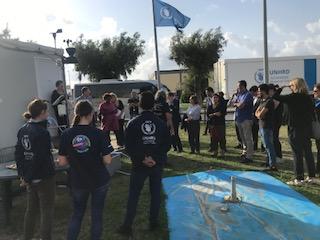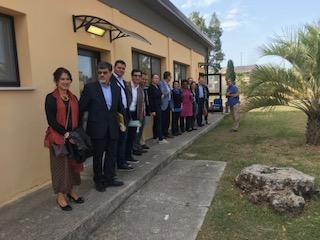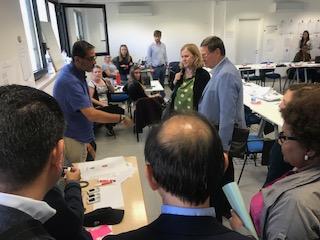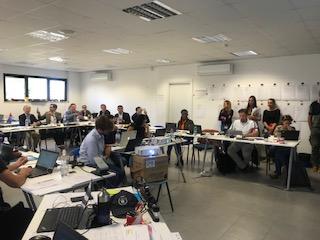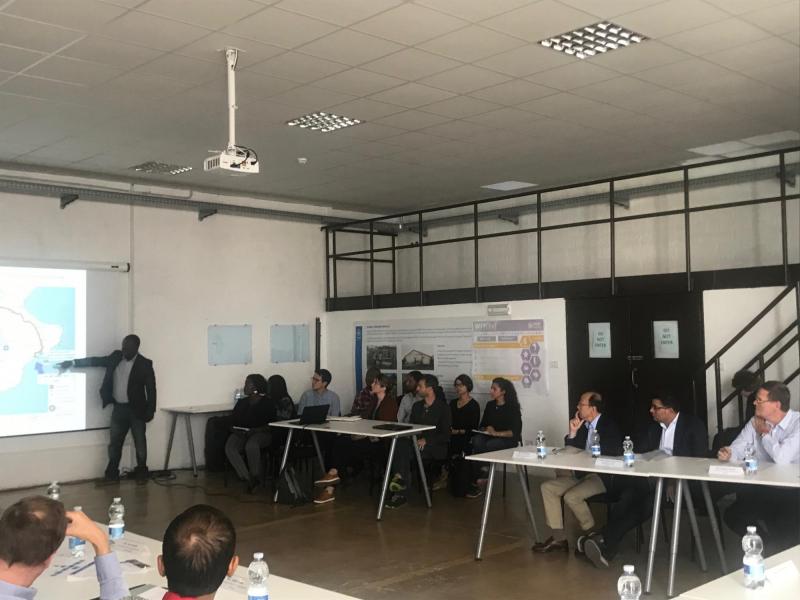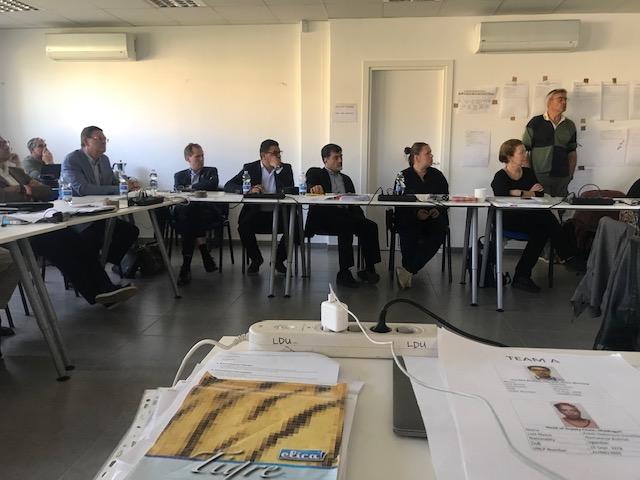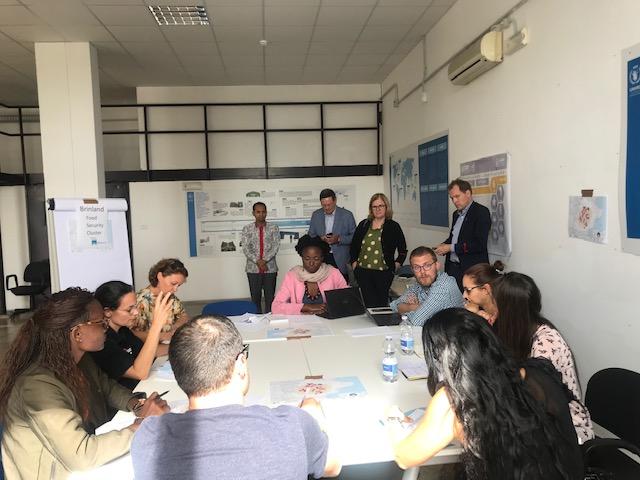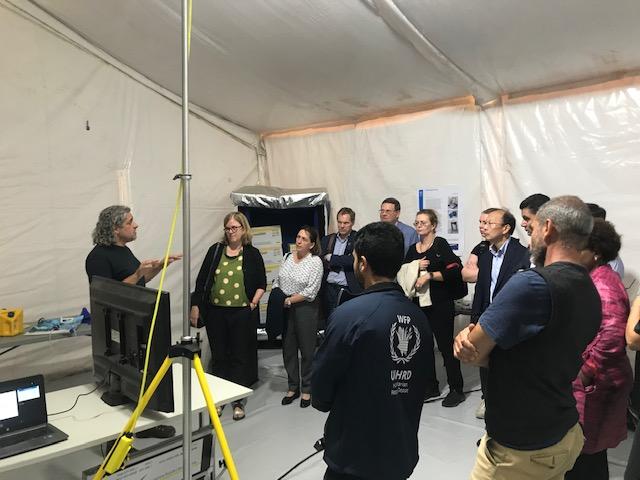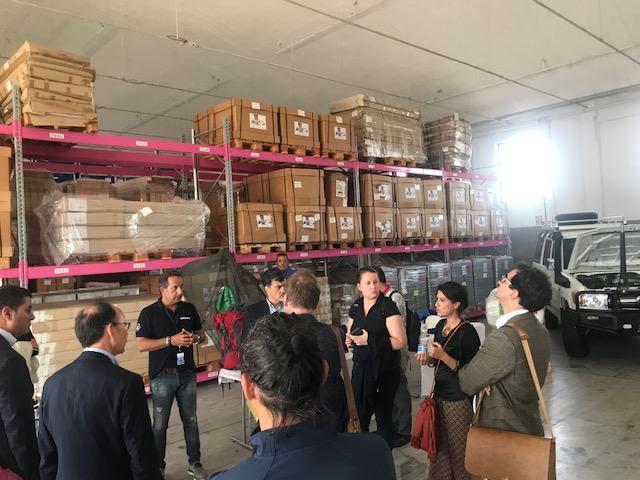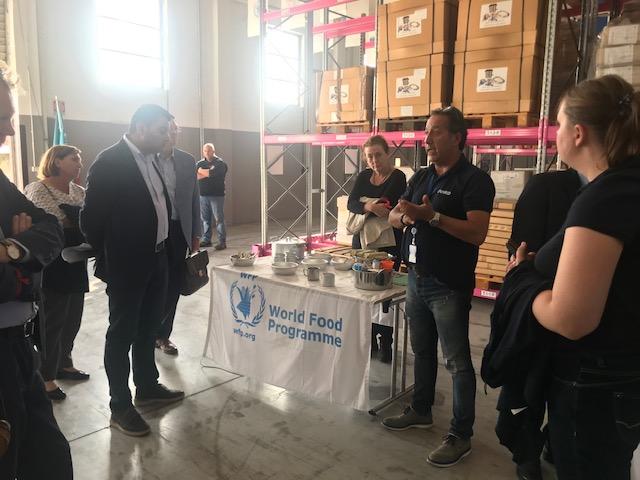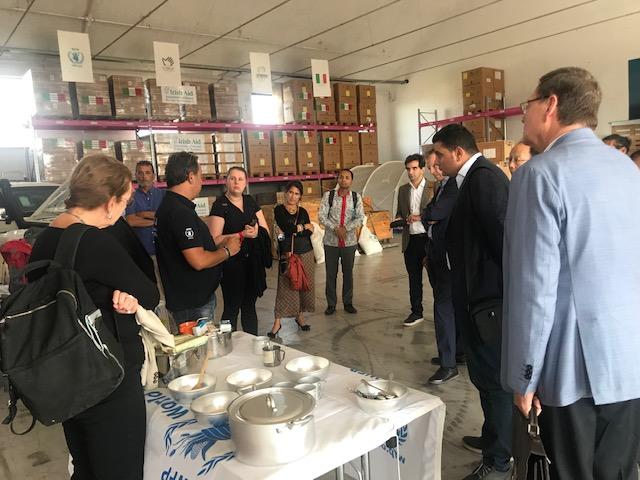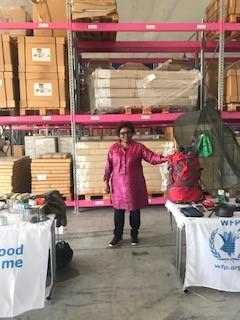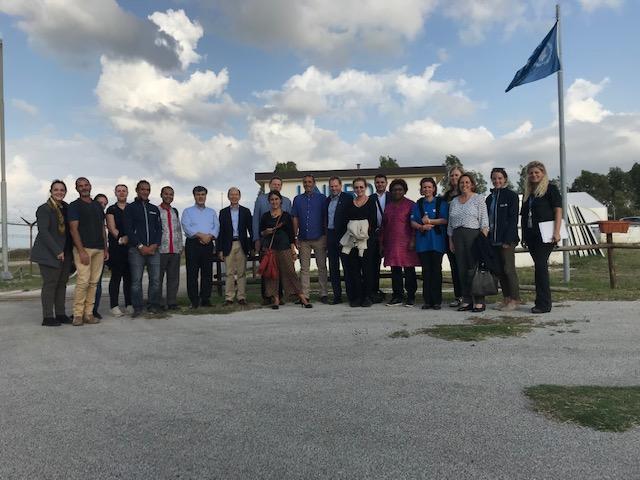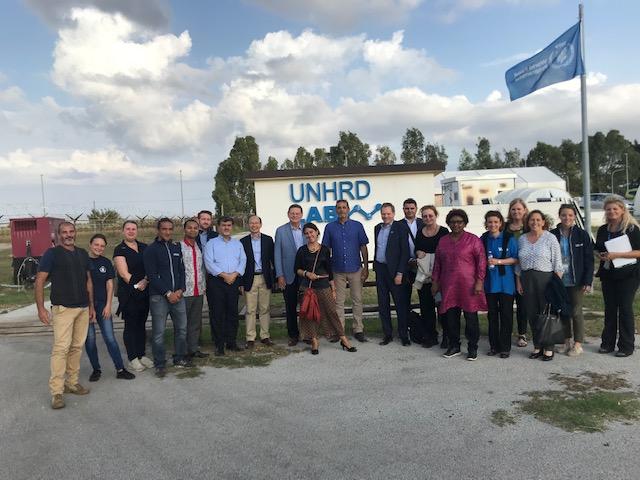On 10 October 2019, a delegation from the Executive Board had a new opportunity to visit the United Nations Humanitarian Response Depot (UNHRD) and its Innovation Lab in Brindisi, Italy. Board visits to the UNHRD in Brindisi have taken place since 2008. This time, representatives were able to observe and participate as part of a Simulation Exercise (SimEx) designed to implement emergency response plans, with the purpose of testing the procedures that would come into effect during a real emergency, helping to identify strengths and weaknesses.
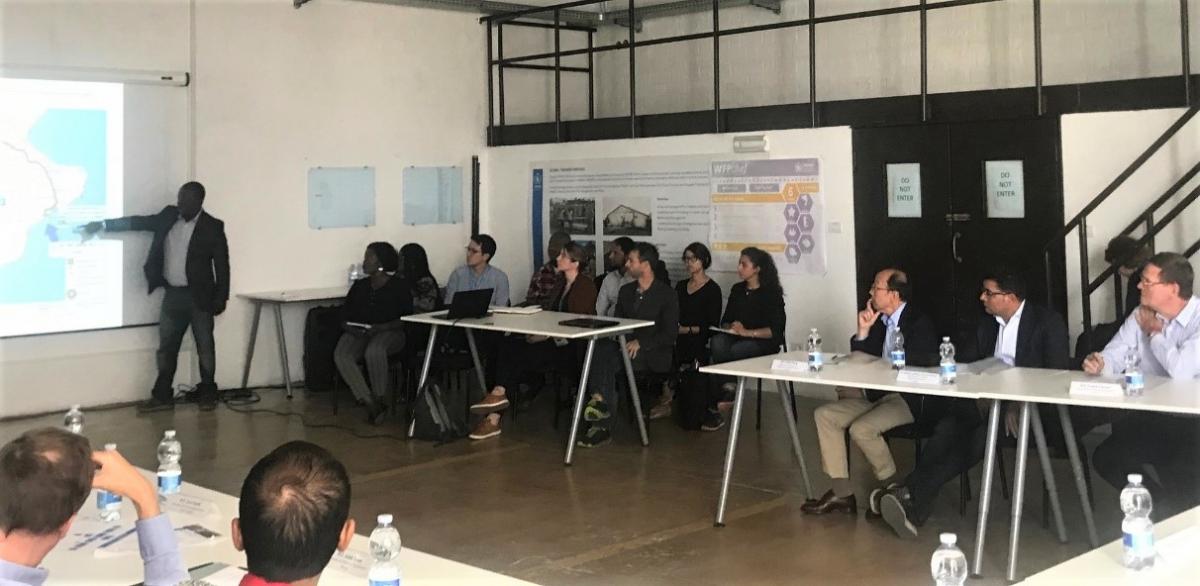
Executive Board delegation observing and participating in SimEx. Photo: WFP/Harriet Spanos
The SimEx participants, mostly chosen from current field operations, are immersed for seven days in a fictitious environment with working conditions, activities and situations that are replicas of previous, real emergency situations. Out of seven training days, the Board delegates were called in on the sixth day to participate in the Helicopter Operation in Brindland, the fictitious region hit by an earthquake that caused massive damages to the local infrastructures. Playing the role of donors, representatives challenged the training participants sent by WFP as first-wave global surge responders to immediately respond to the disaster. In this scenario, all participants are given the chance to get first-hand knowledge on various stakeholders’ work and coordination, deepening understanding on disaster response through practical experience.
As part of the tour, the delegation visited the UNHRD Lab, where innovation and green technologies are at the heart of humanitarian research and development. Examples include the First Flight Kit, i.e. a ready-to-go accommodation and office kit for first responders to transport and construct during the first days of an emergency, and a thermal shield serving as a passive thermal insulation solution that protects temperature sensitive products during transportation and storage.

Learning about innovative and green technologies for humanitarian operations. Photo: WFP/Harriet Spanos
The warehouse in Brindisi, as well as the other five humanitarian hubs around the world, facilitates preparedness and response by supporting strategic stockpiling by United Nations, international, governmental and non-governmental organizations. The network also holds stocks of emergency relief goods such as medical kits, shelter items, ready-to-use supplementary foods, IT equipment and other assets, all designed to support relief organizations responding to emergencies.
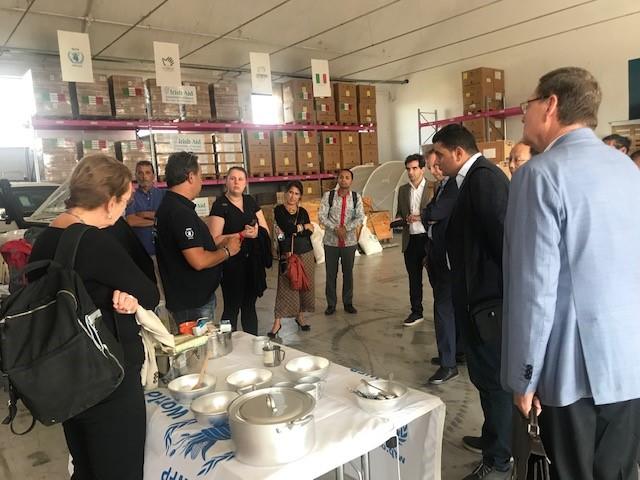
Listening to the utilization of first emergency relief goods inside the UNHRD warehouse. Photo: WFP/Harriet Spanos
The UNHRD Brindisi visit concluded at the United Nations Global Service Centre (UNGSC) whose mandate is to serve the needs of peace operations, providing critical logistics, geospatial, information and telecommunications technologies services as well as training to all peacekeeping and special political missions around the world. Working in conjunction with the United Nations Logistics Base (UNLB) in Brindisi, the UNGSC hosts a second base in Valencia, Spain, to enhance the UN's capacity to respond efficiently to crises around the world.
- By Blaženka Pane, Executive Board Web assistant Consultant, Rome

